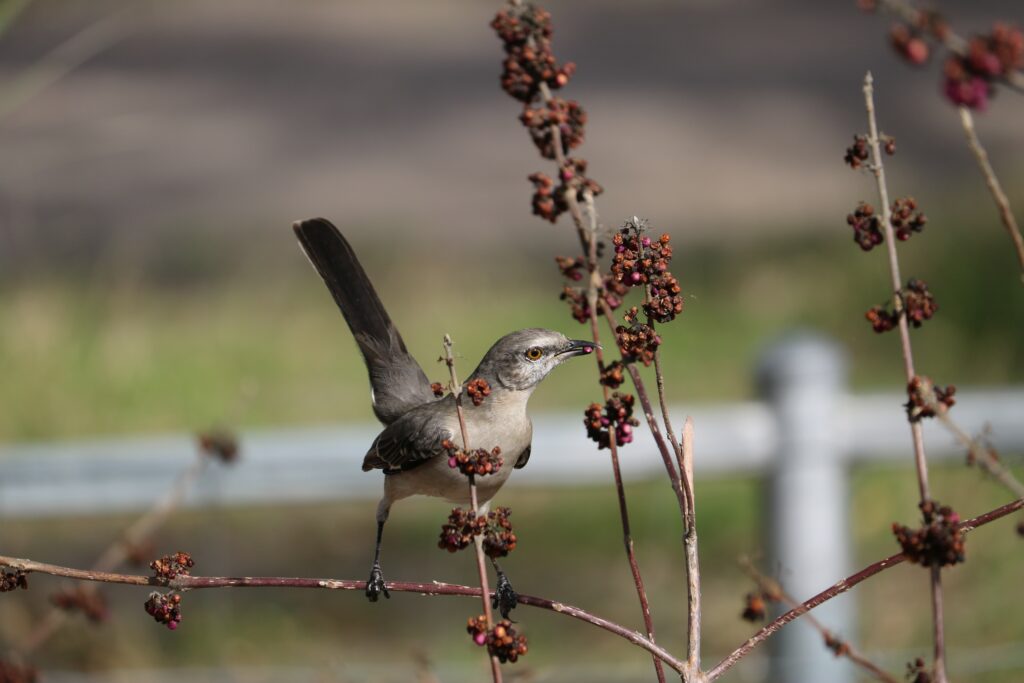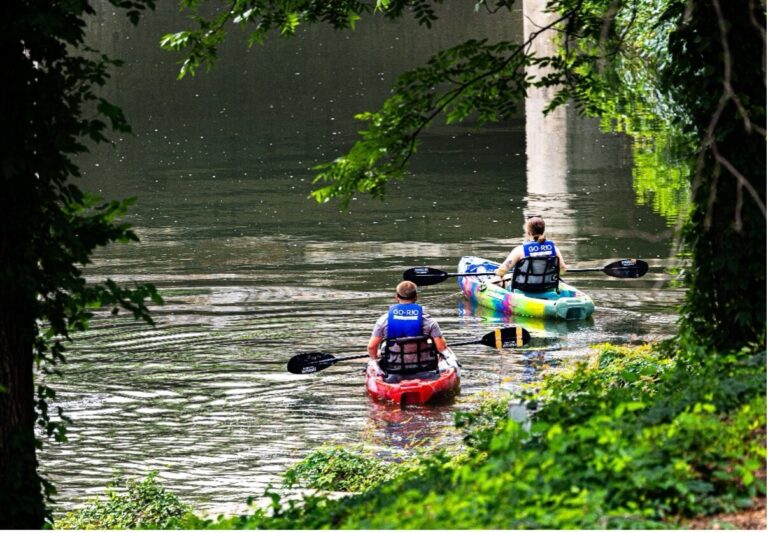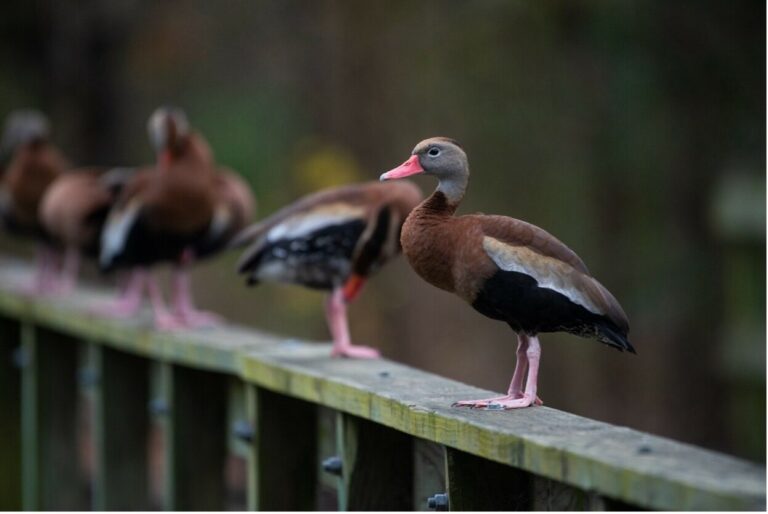Last Updated on January 30, 2024
This week, birders throughout the United States are feverishly completing their sightings in Audubon’s 123rd Christmas Bird Count, which will culminate in the celebration of National Bird Day on January 5. This annual bird count is the nation’s longest-running community science bird project, and the San Antonio River Basin, also known as the San Antonio River Watershed, is a prime place to participate! In today’s blog, we’re celebrating National Bird Day by discussing the dazzling diversity of the birds you’ll find in our watershed during Winter and providing tips on how you can help them.
Winter BACKYARD BirdS
You may be familiar with the Northern Cardinal (Cardinalis cardinalis) and Northern Mockingbird (Mimus polyglottos) because they live year-round in the San Antonio River Watershed and are frequently found in residential landscapes. However, there are many other interesting migratory birds that make their home here only during winter, and you may be able to spot them if you try! All you need to do is go outside and listen for sounds like birds calling, pecking at wood, or scavenging through fallen leaves for food. Although many are shy and may hide from you, you might get lucky! Don’t give up if you don’t spot any right away. Birds can be curious too, and with patience, you may get a good look at them while they try to keep warm and stay fed.
Northern Cardinal in Giant Ragweed along the San Antonio River
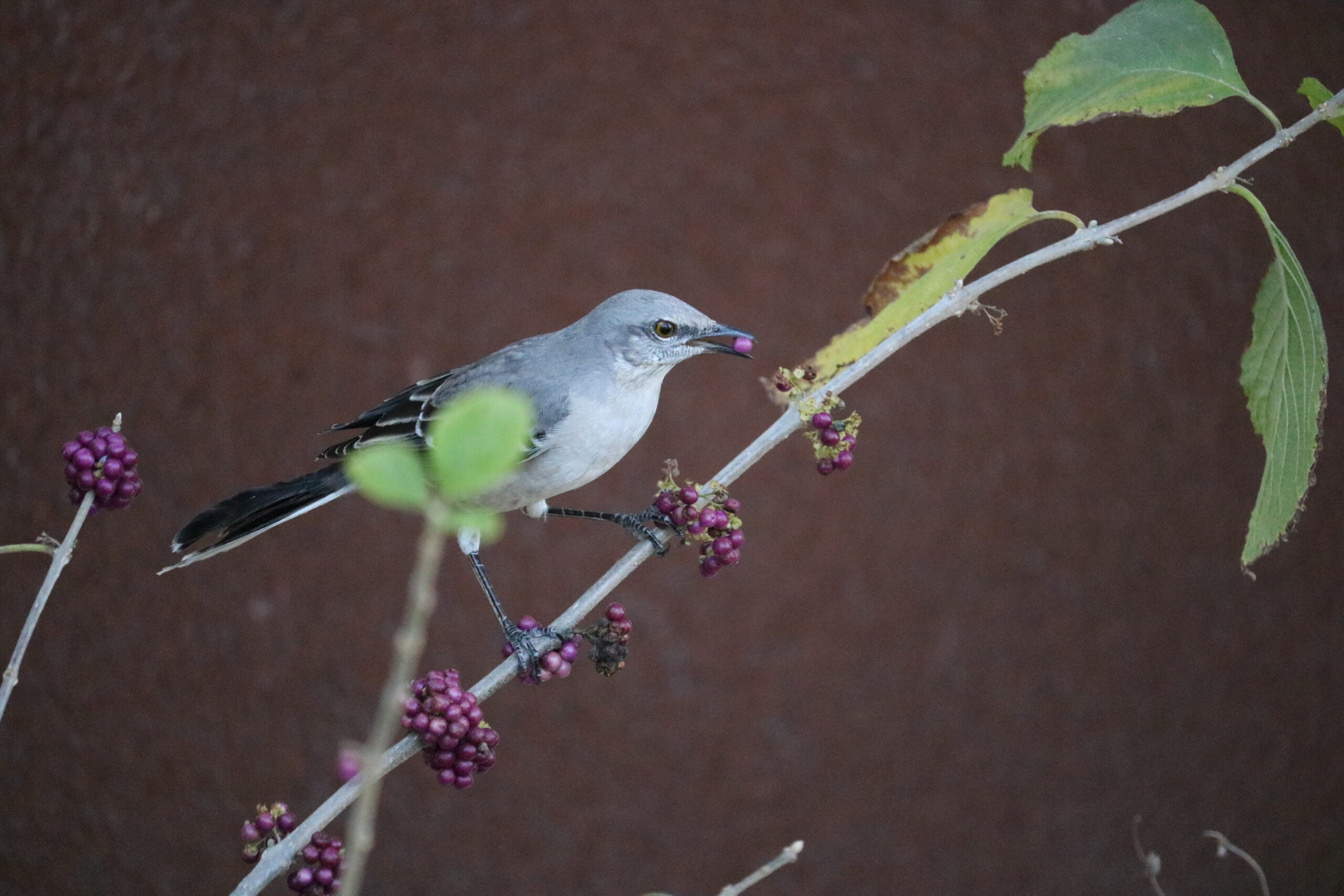
Northern Mockingbird eating American Beautyberries at Confluence Park
How can you help winter birds?
Birds share the same basic needs as humans, including water, food, and shelter. One of the best ways to support birds visiting during the winter is to provide clean water in a safe location away from predators like feral cats. A simple, shallow dish works well for many birds, and it’s best to use one that doesn’t have a slippery surface. Placing a shallow, stable rock in the dish or a thin branch across the plate can help birds access the water. If you have a rain barrel, you may be able to provide a slow drip from it into a shallow dish to serve this purpose. Dripping water into the dish helps draw attention and may bring in more birds.
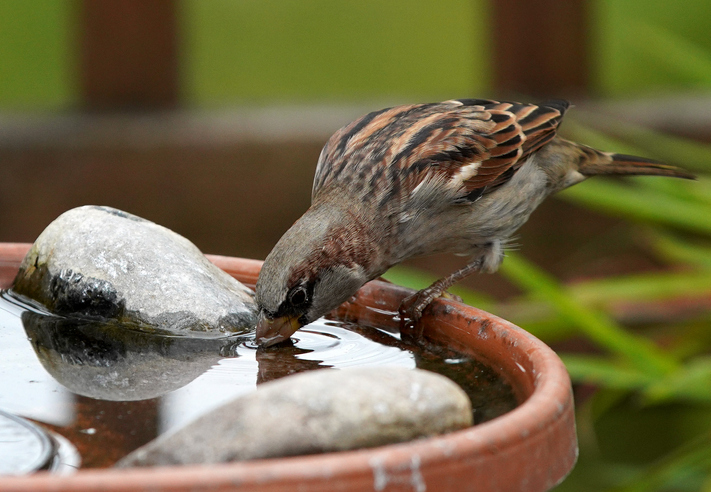
Male House Sparrow drinking from a shallow dish
Other ways to help winter birds include planting and nurturing native shrubs that birds can use for shelter and cover during cold temperatures and planting native plants that provide seeds, berries, and nuts for birds. Some of the best plants for our basin are included in the descriptions of common winter birds that follow.
What Birds Are Here in Winter?
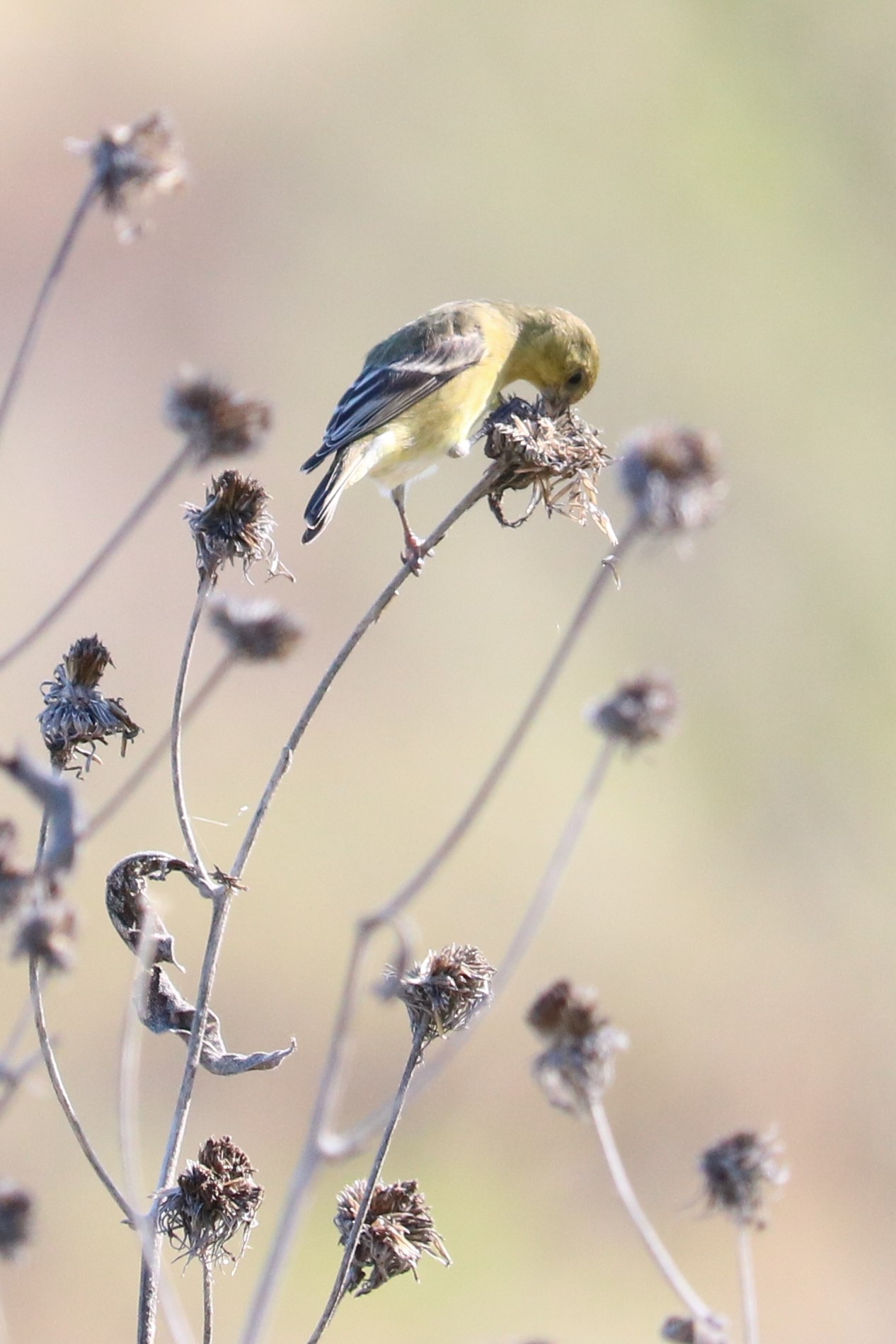
American Goldfinch eating sunflower seeds along the San Antonio River
American Goldfinch, Spinus tristis
American Goldfinch are short-distance migrants who breed and winter in the U.S. and Canada. These birds can be found feeding on seeds of Common Sunflower, Maximillian Sunflower, and Giant Ragweed in the winter, so leave those seedheads where you can! They also feed on seeds of American Sycamore and are attracted to bird feeders. American Goldfinch males are brightly colored in yellow and black during spring and summer. In the winter, both males and females are dull-colored yellowish-brown, having blackish wings with two pale bars or stripes on them.
How to help American Goldfinch in winter: Leave stems with seeds!
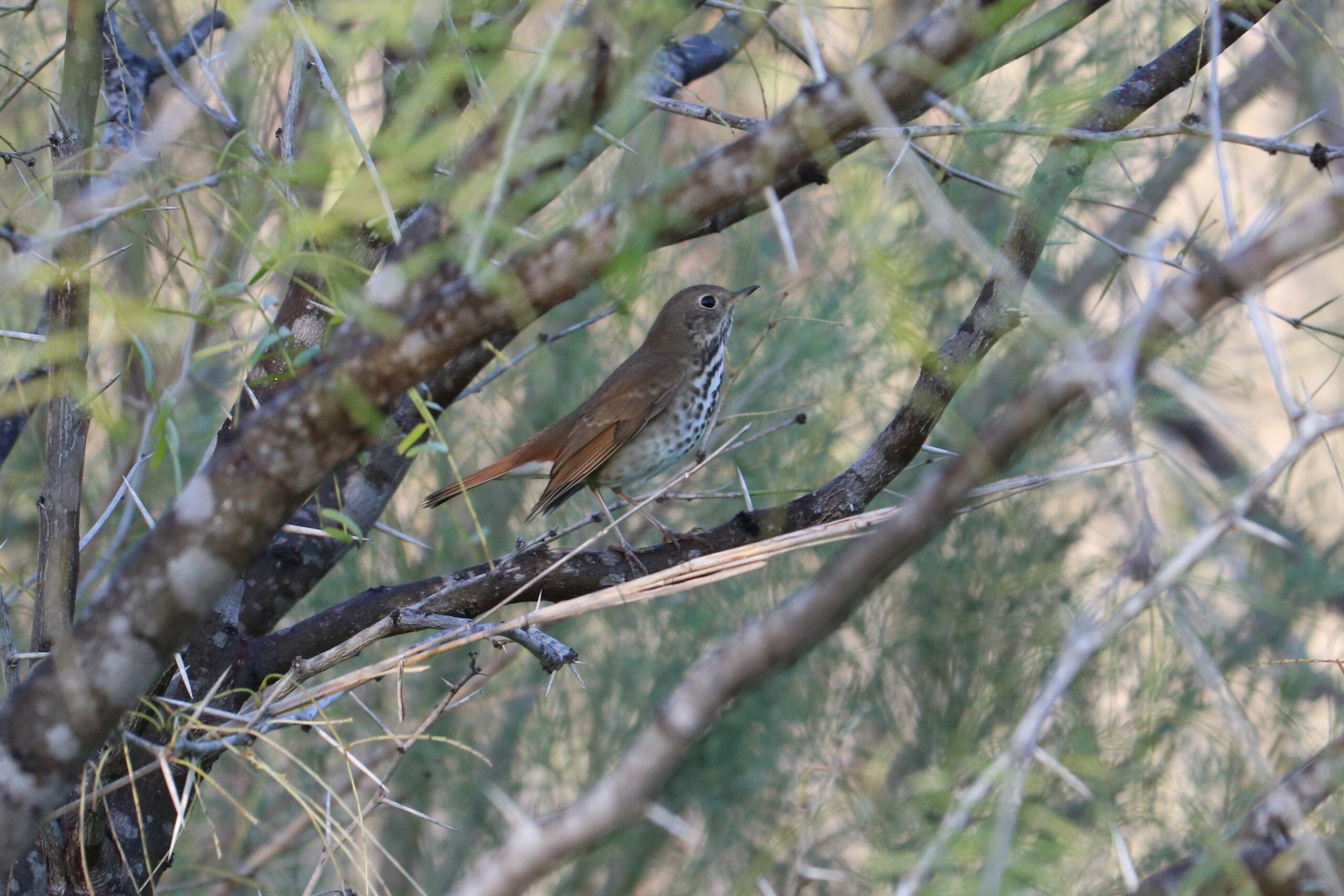
Hermit Thrush perched in Honey Mesquite along the San Antonio River
Hermit Thrush, Catharus guttatus
Hermit Thrush are another short-distance migrant species, and they’re the only North American thrush in the genus Catharus to winter in the U.S. These birds have dark spots on their throat and breast with a reddish-brown tail, brown head and back, and light-colored belly. Find the Hermit Thrush rummaging through leaf litter in search of insects or eating berries on trees or shrubs, including Yaupon Holly.
How to help Hermit Thrush in Winter: Leave the leaves!
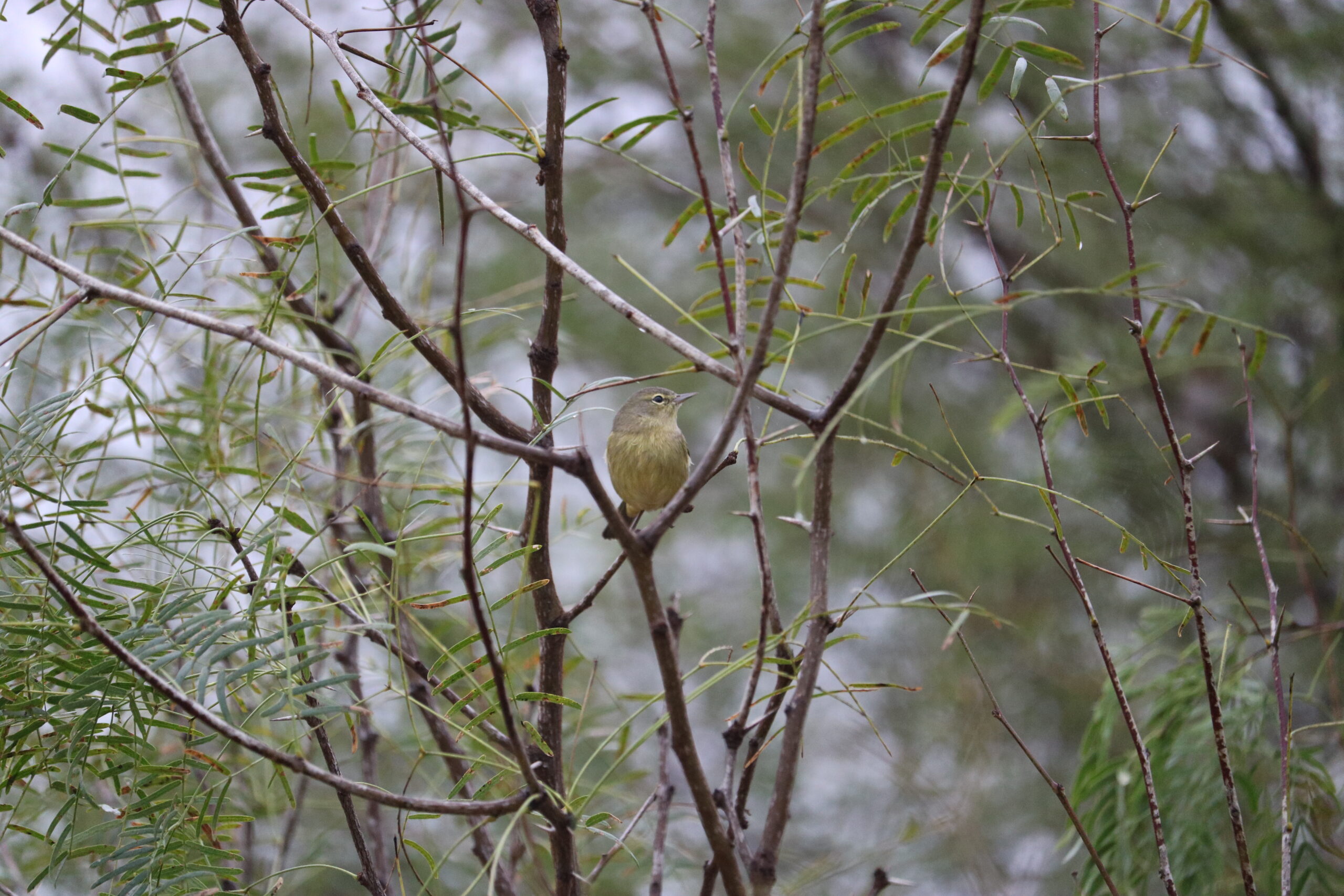
Orange-crowned Warbler perched in Honey Mesquite along the San Antonio River
Orange-crowned Warbler, Leiothlypis celata
Orange-crowned Warblers are medium to long-distance migrants, meaning they may travel one-way distances between a few hundred miles to over 12,000 miles between their breeding and wintering grounds. These birds are generally a pale yellow to olive color overall, with gray on the wings and head. You will rarely see the orange crown that they are named for. Find them in dense shrubs or low vegetation, searching for insects to eat, and occasionally at suet feeders.
How to help Orange Crowned Warblers in the Winter: Plant dense shrubs & low vegetation!
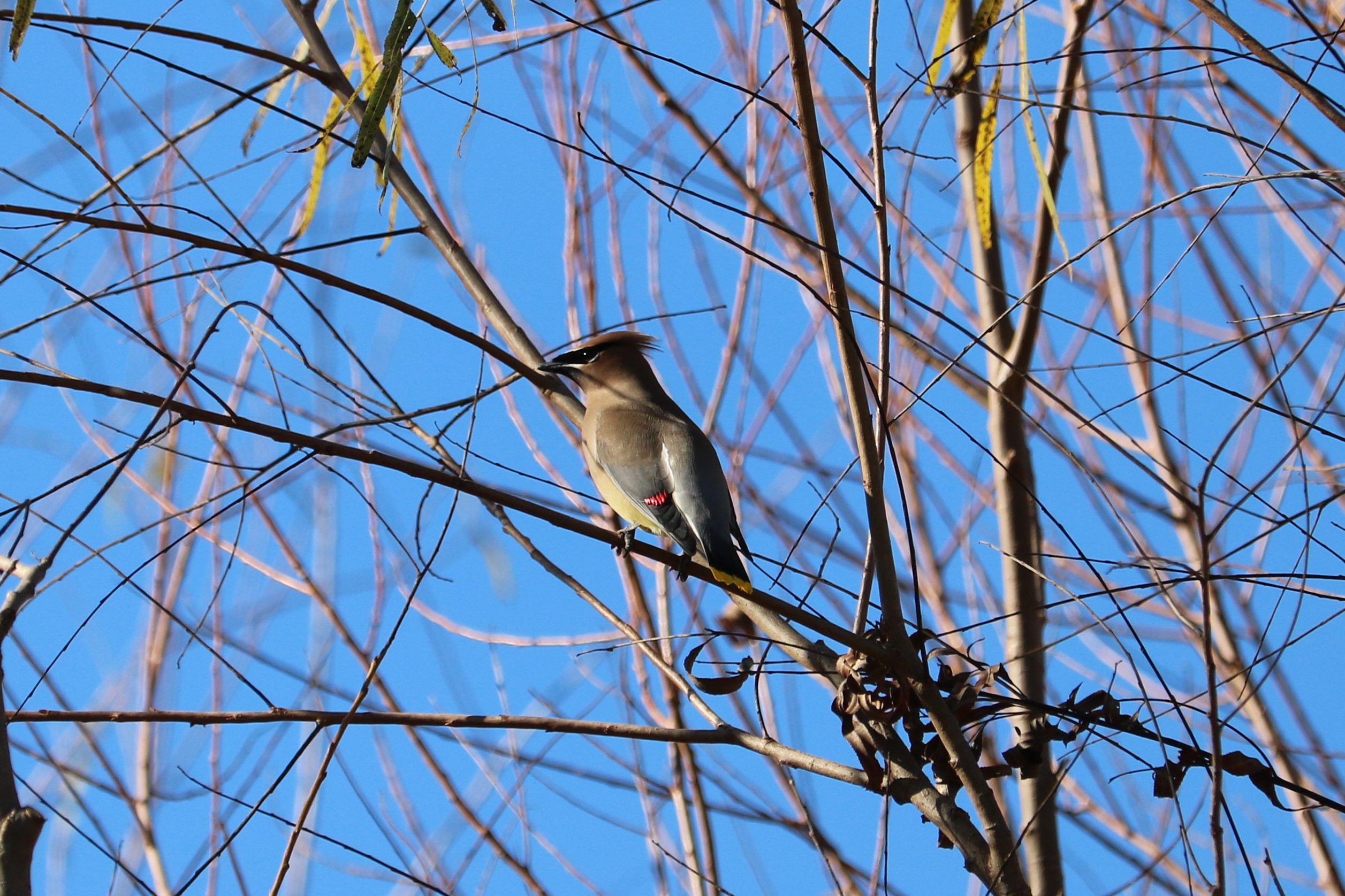
Cedar Waxwing perched in a Black Willow along the San Antonio River. Listen to their distinctive high-pitched call!
Cedar Waxwing, Bombycilla cedrorum
Cedar Waxwings are short to long-distance migrants, and some travel all the way to Costa Rica and Panama for winter. Usually heard before they’re seen, they often appear in large groups feasting on berries of Yaupon Holly, Possomhaw, and Ashe Juniper (also called Cedar in our area). It’s an amazing sight to see single Northern Mockingbirds trying to protect berries in their territories by fending off hundreds of Cedar Waxwings, as the Waxwings can strip trees bare in minutes. Cedar Waxwings are colored with a bright yellow tip on their tail, yellow belly, gray back, chestnut head with low crest, and a black mask that is outlined in white.
How to help Cedar Waxwings this Winter: Plant winter fruiting native berry shrubs & trees!
Healthy Birds=A Healthy San Antonio River
We can all celebrate and support birds by providing for their basic needs throughout the winter, no matter the size of our space-whether that’s a balcony, yard, community park, or another area. Not only will this help birds, but it will also contribute to healthier ecosystems and communities throughout our watershed!
Sign up for the River Reach
River Reach is a quarterly, 12-page newsletter that is designed to inform the San Antonio River Authority’s constituents about the agency’s many projects, serve as a communication vehicle for the board of directors and foster a sense of unity and identity among the residents of Bexar, Wilson, Karnes, and Goliad counties.
If you wish to be placed on the mailing list for River Reach, please contact us or complete the form.

